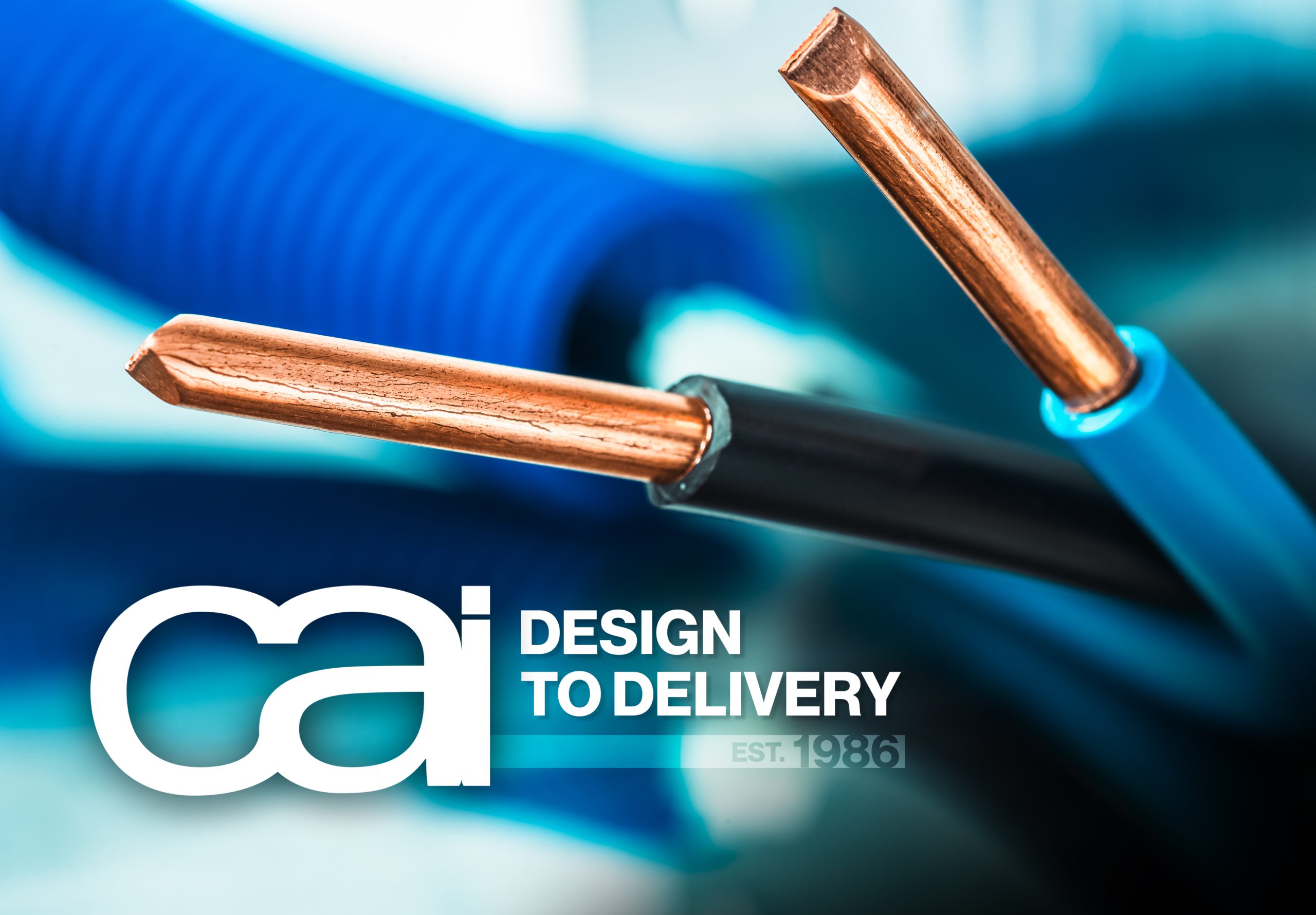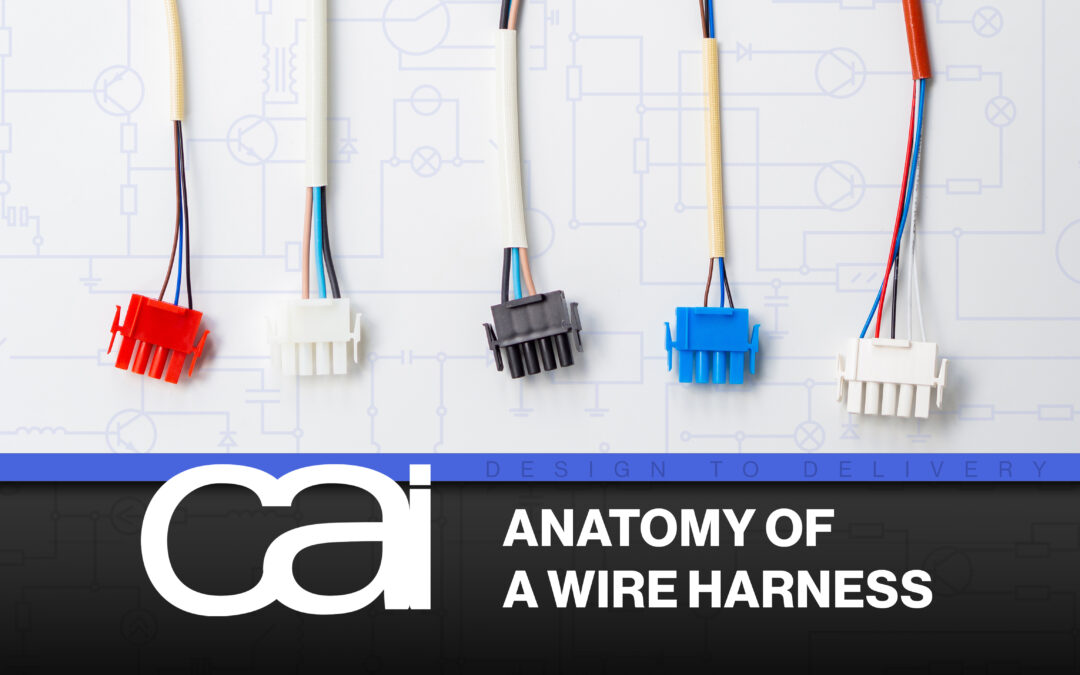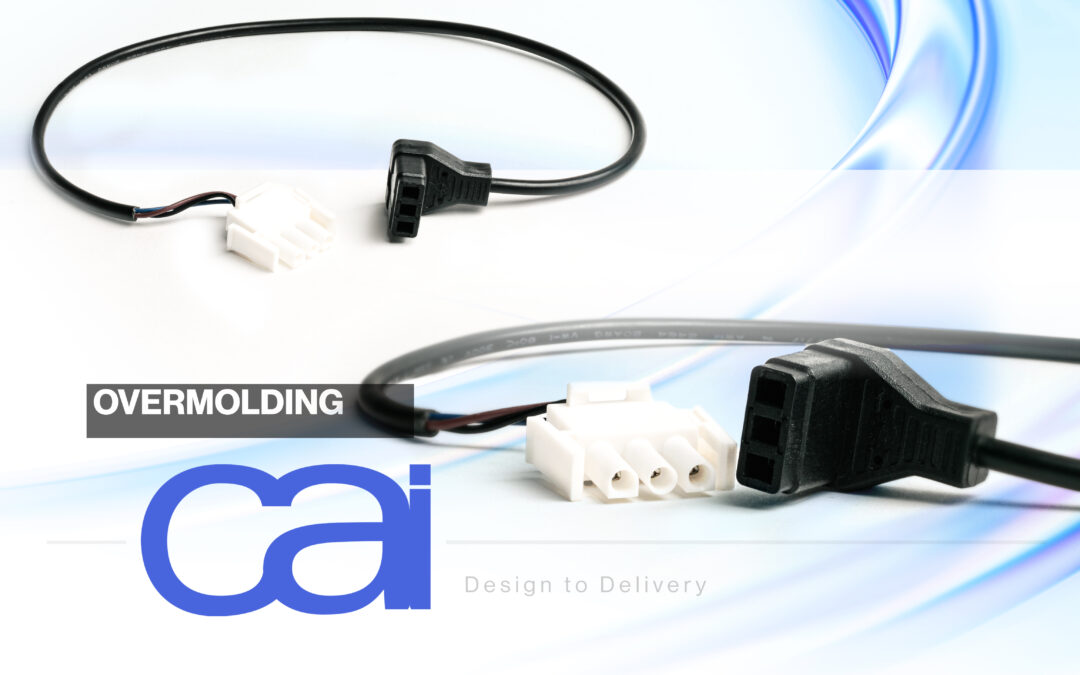Understanding Common Conductor Types for Wires & Cables
At the center of each electrical wire, and each individual wire within a cable, is a conductor which is the electrical highway for carrying power or data from one point to another. Conductors are typically made of metals due to their ability to effectively conduct electricity. However, different metals feature different properties and conductivity levels, and certain coatings can even be applied to enhance performance. This gives manufacturers a variety of options when crafting an electrical system to perform optimally in its intended application and environment.
When choosing the right electrical conductors for your next wire harness, cable assembly, or other electrical system, it’s important to know how they work and what each type offers.
For expert help designing and manufacturing your electrical systems, reach out to CAI today with your unique vision and specifications. We know which conductors and other elements are perfect for your electrical project.
Wire Conductor Materials
The most frequently utilized materials for conductors in electrical wiring include copper, aluminum, high-strength alloys, and steel.
Copper Conductors
Highly versatile and relatively inexpensive, copper possesses a number of advantages that make it, by far, the most widely used conductor material in everything from home wiring to power transmission networks. Besides being exceptional at electrical and thermal conductivity, copper also offers enhanced ductility, malleability, and solderability, as well as a high melting point and high resistance to corrosion and wear.
Bare copper is more prevalent and features low electrical resistance which allows for efficient energy transfer and greater signal integrity. However, tinned or silver-coated copper can provide even greater performance.
Aluminum Conductors
Though not as conductive, aluminum is less expensive than copper and most other conductor materials, and its lightweightedness makes it a popular choice for long-distance power transmission. Aluminum can reduce expenses in large-scale electrical systems but is prone to oxidation and corrosion, leading to increased resistance and potential reliability issues over time.
Steel Conductors
While steel can also be used as a conductor and delivers exceptional mechanical strength, it doesn’t conduct electricity as well and, consequently, isn’t a common option. Often used in medical lead wires and cables due to its strength and corrosion resistance, stainless steel is typically plated with other metals like gold or copper to improve conductivity.
Copper-Covered Steel Conductors
Combining the exceptional conductivity and corrosion resistance of copper with the high strength of steel, copper-covered steel is a composite metal produced one of three ways: molten welding for a permanent bond, electroplating over a steel rod, or metallurgical bonding of the two metals. Copper-clad steel wiring is mainly used for grounding purposes, line tracing to locate underground utilities, telephone drop wire cables, and as inner conductors of coaxial cables.
High-Strength Alloys
An alloy is a metal made by combining two or more metallic elements, typically to improve limited strength or corrosion resistance when one or more of those elements is used alone. Some of the most commonly used alloys include cadmium copper, chromium copper, cadmium-chromium copper, and zirconium copper. High-strength alloy conductors are also often nickel-plated or silver-plated.
Featuring high tensile strength and greater flex life with only a slight increase in DC resistance, copper alloy conductors are pricier than copper-covered steel but allow for significant size and weight reductions, which are favored in many electrical applications.
Conductor Coatings
Unlike insulators — materials such as rubber, asbestos, polyethylene, and thermoplastic which prevent heat and electricity from passing through, thus providing additional protection — conductor coatings are used to enhance the performance and durability of conductors.
Uncoated copper is highly conductive and ideal in applications where external threats such as extreme temperatures and moisture are limited. At room temperatures, the interaction between oxygen and copper creates copper oxide, and higher temperatures accelerate this reaction. Unfortunately, this oxide film hampers electrical conduction, necessitating its prevention or removal for optimal reliability and lifespan.
One of the main ways to accomplish this is by coating the conductors with another metal which has a slower oxidation rate. Coatings are also used to facilitate termination (soldering) and sometimes to facilitate a lower-resistance connection. There are several different types of coated conductors, including:
Silver-Coated Conductors
Silver is the most conductive metal, but due to its hefty price tag, it is rarely used as a conductor itself. However, silver is often applied as a coating over conductors in order to improve conductivity, perform in higher frequencies, and facilitate a wider range of operating temperatures. This makes it a popular option for demanding environments such as those in aerospace applications.
Nickel-Coated Conductors
Nickel is also used to widen a conductor’s operating temperature range. If nickel coating is thick enough, it’s possible for a wire to withstand temperatures up to 750°C. Able to increase corrosion resistance and enhance durability, nickel plating is an preferred alternative to silver coating when solder wicking is a concern, as regular solder doesn’t wet nickel as readily as it does silver.
Tin-Coated Conductors
Primarily used to deliver greater protection against oxidation and corrosion, tinning is a process of melting tinned solder around a wire strand. Used in a wide variety of industries, tinning offers improved water resistance, enhanced conductivity, and easier soldering. Though they are more costly than bare metal conductors, tinned conductors can last up to 10 times longer than non-tinned ones.
While not suitable for consistent exposure to temperatures exceeding 150°C, the thin layer of tin coating offers enhanced oxidation and corrosion resistance, making tinned conductors a great choice for outdoor environments, especially those where high moisture can be a threat.
There are several different types of tinning, including tinned, heavy tinned, prefused/pre-bond, overcoat, and topcoat, each having their own characteristics such as a different coating processes and levels of thickness.
As a trusted manufacturer of custom wire harnesses, cable assemblies, and other electrical components for over 35 years, the team at CAI are experts at choosing the perfect conductors, coatings, and other materials to meet the needs of clients across nearly every industry. Explore our capabilities, reach out with your questions, or request a quote today!





